
How to Use Mini Boost Converter 1A - 5/8/9/12V Fixed: Examples, Pinouts, and Specs
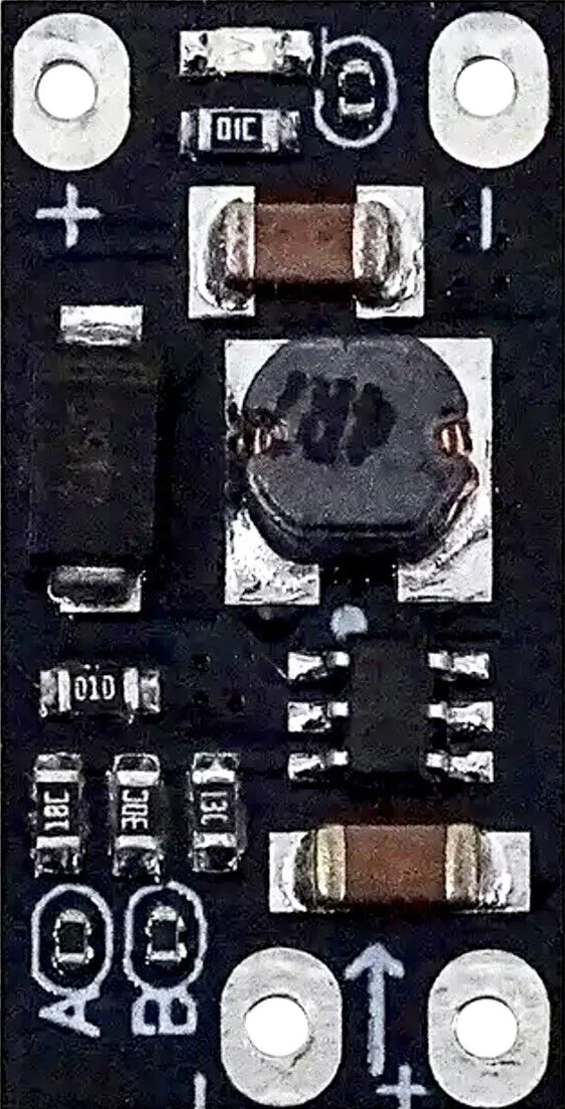
 Design with Mini Boost Converter 1A - 5/8/9/12V Fixed in Cirkit Designer
Design with Mini Boost Converter 1A - 5/8/9/12V Fixed in Cirkit DesignerIntroduction
The Mini Boost Converter 1A - 5/8/9/12V Fixed is a compact DC-DC step-up converter designed to increase a lower input voltage to a fixed higher output voltage. It supports output voltage levels of 5V, 8V, 9V, or 12V, selectable via onboard configuration. With a maximum output current of 1A, this module is ideal for powering low-voltage devices such as microcontrollers, sensors, and small electronic projects from a single-cell battery or other low-voltage sources.
Explore Projects Built with Mini Boost Converter 1A - 5/8/9/12V Fixed
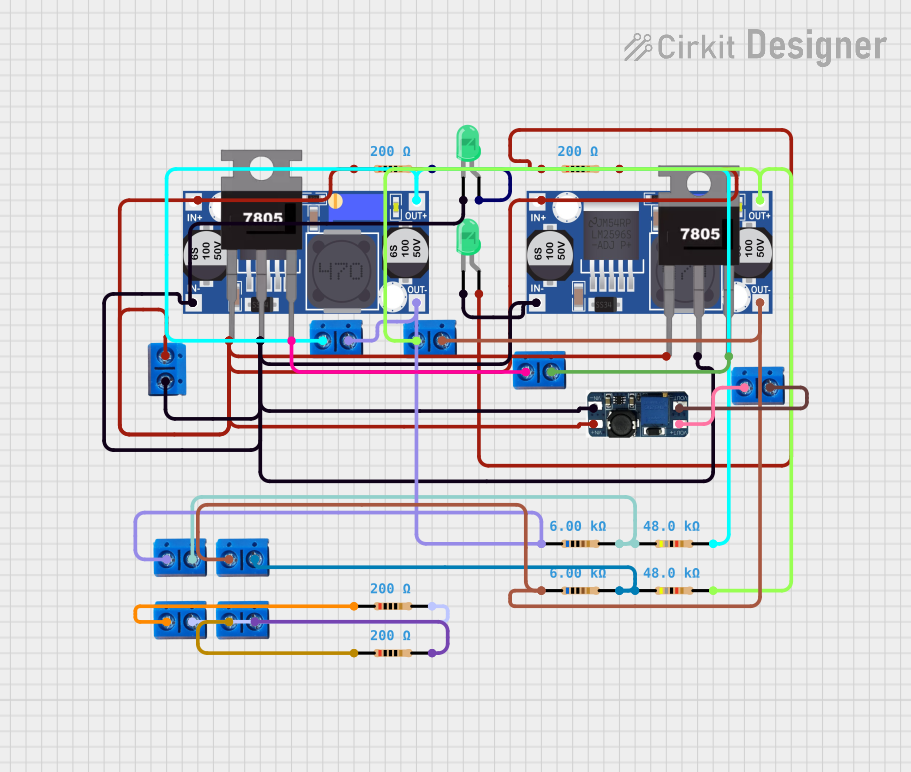
 Open Project in Cirkit Designer
Open Project in Cirkit Designer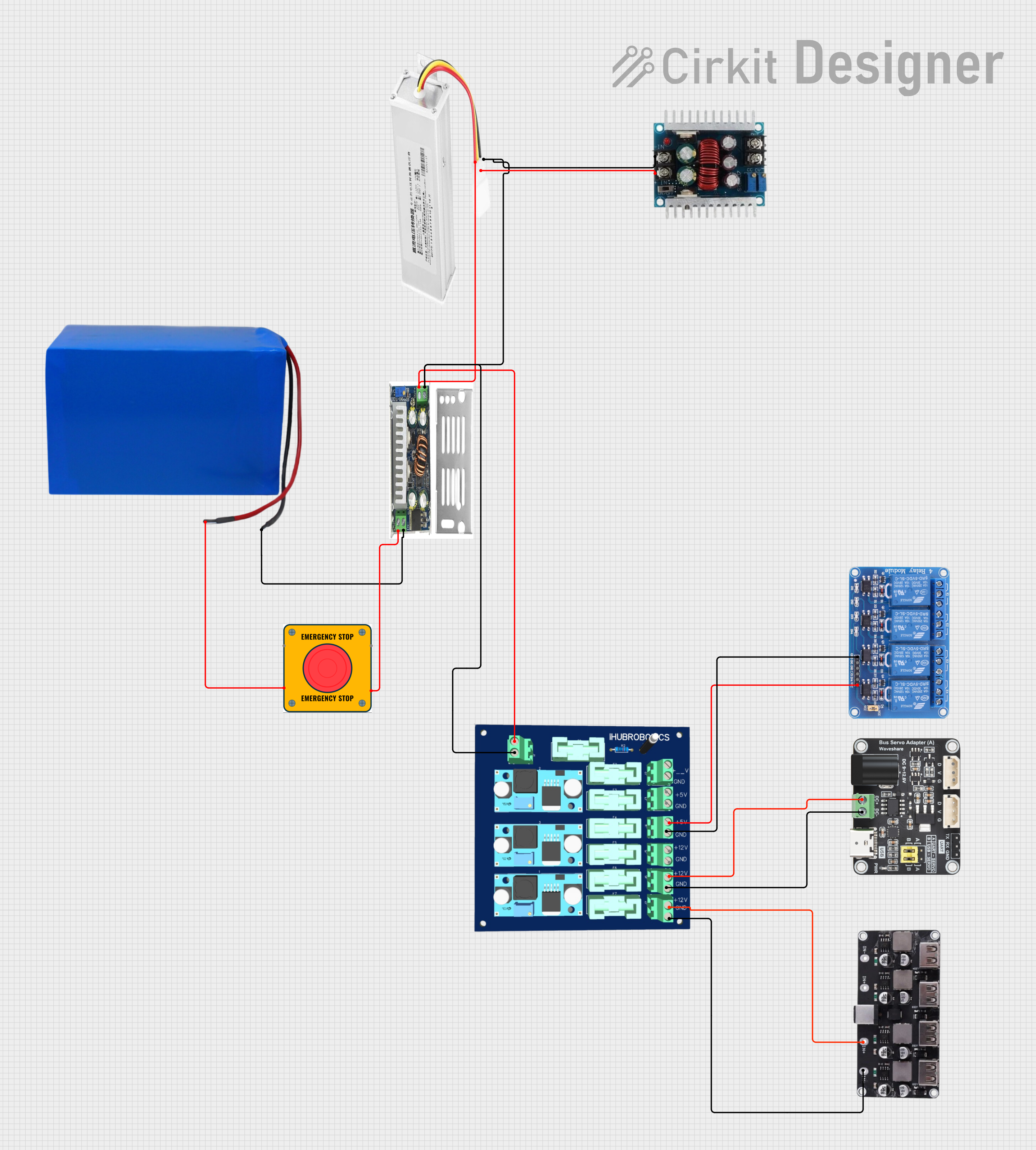
 Open Project in Cirkit Designer
Open Project in Cirkit Designer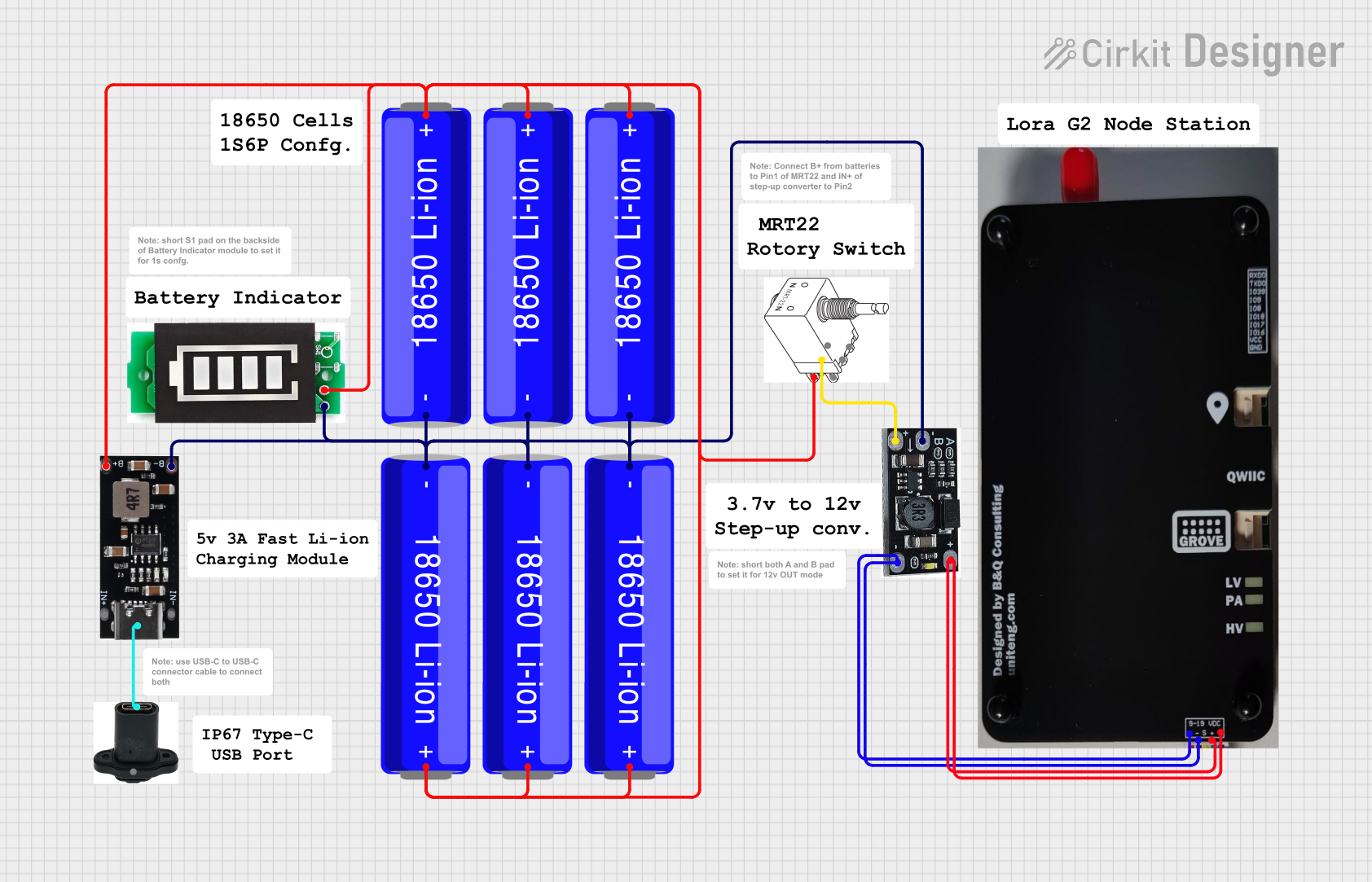
 Open Project in Cirkit Designer
Open Project in Cirkit Designer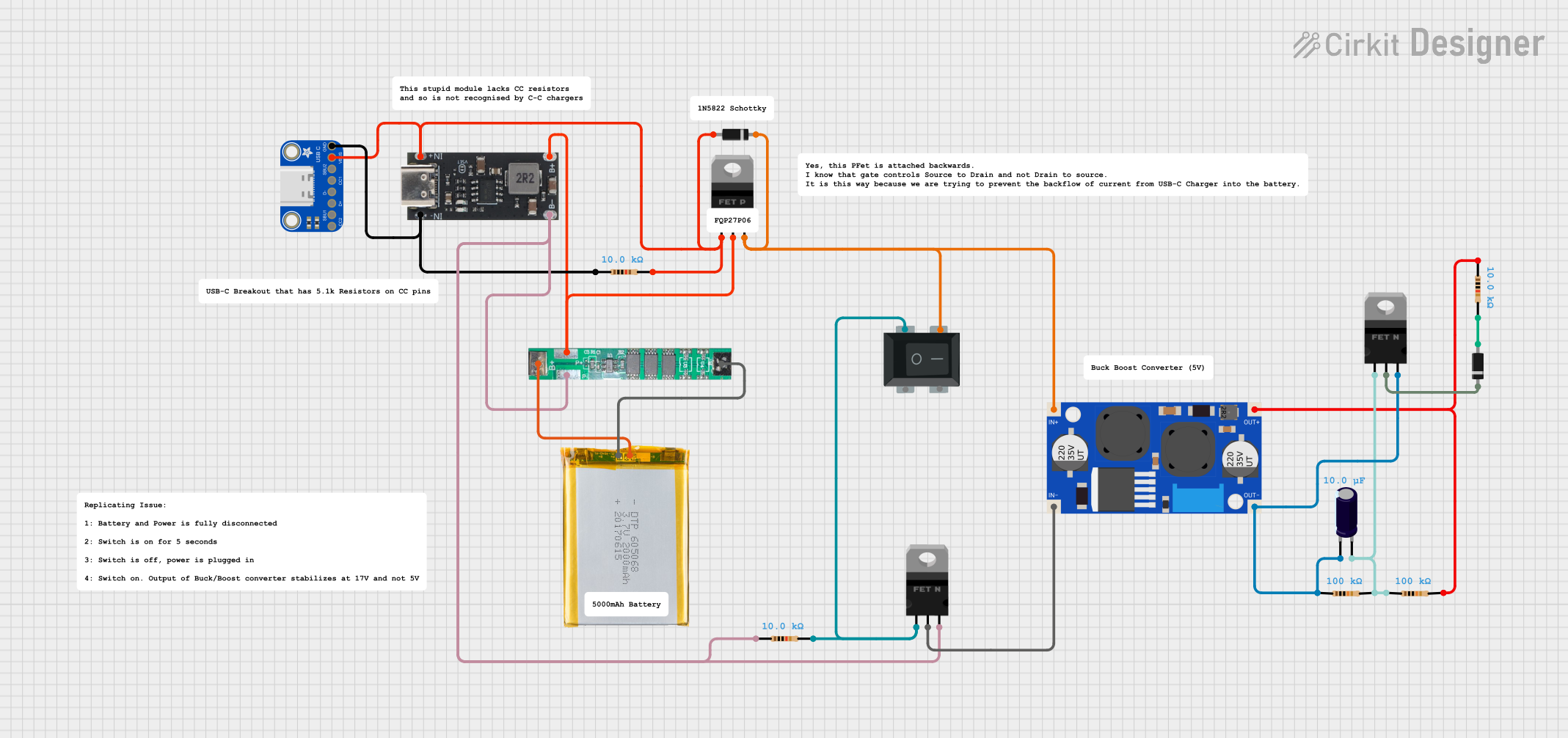
 Open Project in Cirkit Designer
Open Project in Cirkit DesignerExplore Projects Built with Mini Boost Converter 1A - 5/8/9/12V Fixed

 Open Project in Cirkit Designer
Open Project in Cirkit Designer
 Open Project in Cirkit Designer
Open Project in Cirkit Designer
 Open Project in Cirkit Designer
Open Project in Cirkit Designer
 Open Project in Cirkit Designer
Open Project in Cirkit DesignerCommon Applications
- Powering microcontrollers (e.g., Arduino, ESP32) from a single-cell Li-ion battery.
- Driving small DC motors or LEDs requiring a higher voltage.
- Portable electronics and battery-powered devices.
- DIY electronics projects requiring a compact voltage boost solution.
Technical Specifications
Key Technical Details
| Parameter | Value |
|---|---|
| Input Voltage Range | 2V to 24V |
| Output Voltage Options | 5V, 8V, 9V, 12V (fixed, selectable) |
| Maximum Output Current | 1A |
| Efficiency | Up to 92% (depending on input/output load) |
| Dimensions | 22mm x 17mm x 4mm |
| Operating Temperature | -40°C to +85°C |
Pin Configuration and Descriptions
| Pin Name | Description |
|---|---|
| VIN | Positive input voltage (2V to 24V). Connect to the power source. |
| GND | Ground connection. Connect to the negative terminal of the power source. |
| VOUT | Positive output voltage (5V, 8V, 9V, or 12V). Connect to the load device. |
Usage Instructions
How to Use the Mini Boost Converter in a Circuit
Input Voltage Connection:
- Connect the VIN pin to the positive terminal of your power source (e.g., a battery).
- Connect the GND pin to the negative terminal of the power source.
- Ensure the input voltage is within the range of 2V to 24V.
Output Voltage Selection:
- The module is pre-configured to output a fixed voltage (5V, 8V, 9V, or 12V).
- Check the product label or documentation to confirm the preset output voltage.
- If adjustable, refer to the manufacturer's instructions for changing the output voltage.
Output Voltage Connection:
- Connect the VOUT pin to the positive terminal of your load (e.g., microcontroller, motor).
- Connect the load's ground to the GND pin of the module.
Power On:
- Once all connections are secure, power on the input source.
- Verify the output voltage using a multimeter before connecting sensitive devices.
Important Considerations and Best Practices
- Input Voltage Range: Ensure the input voltage is within the specified range (2V to 24V). Exceeding this range may damage the module.
- Output Current Limit: Do not exceed the maximum output current of 1A to prevent overheating or damage.
- Heat Dissipation: For high loads, ensure proper ventilation or add a heatsink to prevent overheating.
- Polarity: Double-check the polarity of the input and output connections to avoid damage.
- Testing: Use a multimeter to verify the output voltage before connecting sensitive devices.
Example: Using the Mini Boost Converter with an Arduino UNO
To power an Arduino UNO from a 3.7V Li-ion battery using the Mini Boost Converter (set to 5V output):
- Connect the VIN pin of the converter to the positive terminal of the battery.
- Connect the GND pin of the converter to the negative terminal of the battery.
- Connect the VOUT pin of the converter to the 5V pin of the Arduino UNO.
- Connect the GND pin of the converter to the GND pin of the Arduino UNO.
Here is a simple Arduino sketch to blink an LED, powered by the Mini Boost Converter:
// Blink an LED connected to pin 13 of the Arduino UNO
// Ensure the Arduino is powered via the Mini Boost Converter (5V output)
void setup() {
pinMode(13, OUTPUT); // Set pin 13 as an output
}
void loop() {
digitalWrite(13, HIGH); // Turn the LED on
delay(1000); // Wait for 1 second
digitalWrite(13, LOW); // Turn the LED off
delay(1000); // Wait for 1 second
}
Troubleshooting and FAQs
Common Issues and Solutions
No Output Voltage:
- Cause: Incorrect input voltage or loose connections.
- Solution: Verify the input voltage is within the range of 2V to 24V. Check all connections.
Output Voltage Too Low or Unstable:
- Cause: Input voltage is too low or the load exceeds 1A.
- Solution: Ensure the input voltage is sufficient and the load current is within the 1A limit.
Module Overheating:
- Cause: Prolonged operation at high current or poor ventilation.
- Solution: Reduce the load current or improve heat dissipation with a heatsink.
Device Not Powering On:
- Cause: Incorrect polarity or damaged module.
- Solution: Double-check the polarity of all connections. Replace the module if damaged.
FAQs
Q: Can I adjust the output voltage?
A: The output voltage is fixed to one of the preset values (5V, 8V, 9V, or 12V). Refer to the manufacturer's instructions for reconfiguration if supported.Q: What happens if I exceed the 1A current limit?
A: Exceeding the current limit may cause the module to overheat, shut down, or become permanently damaged.Q: Can I use this module with a solar panel?
A: Yes, as long as the solar panel's output voltage is within the input range (2V to 24V) and provides sufficient current.Q: Is the module protected against reverse polarity?
A: No, the module does not have built-in reverse polarity protection. Always double-check your connections.
This concludes the documentation for the Mini Boost Converter 1A - 5/8/9/12V Fixed. For further assistance, refer to the manufacturer's support resources.